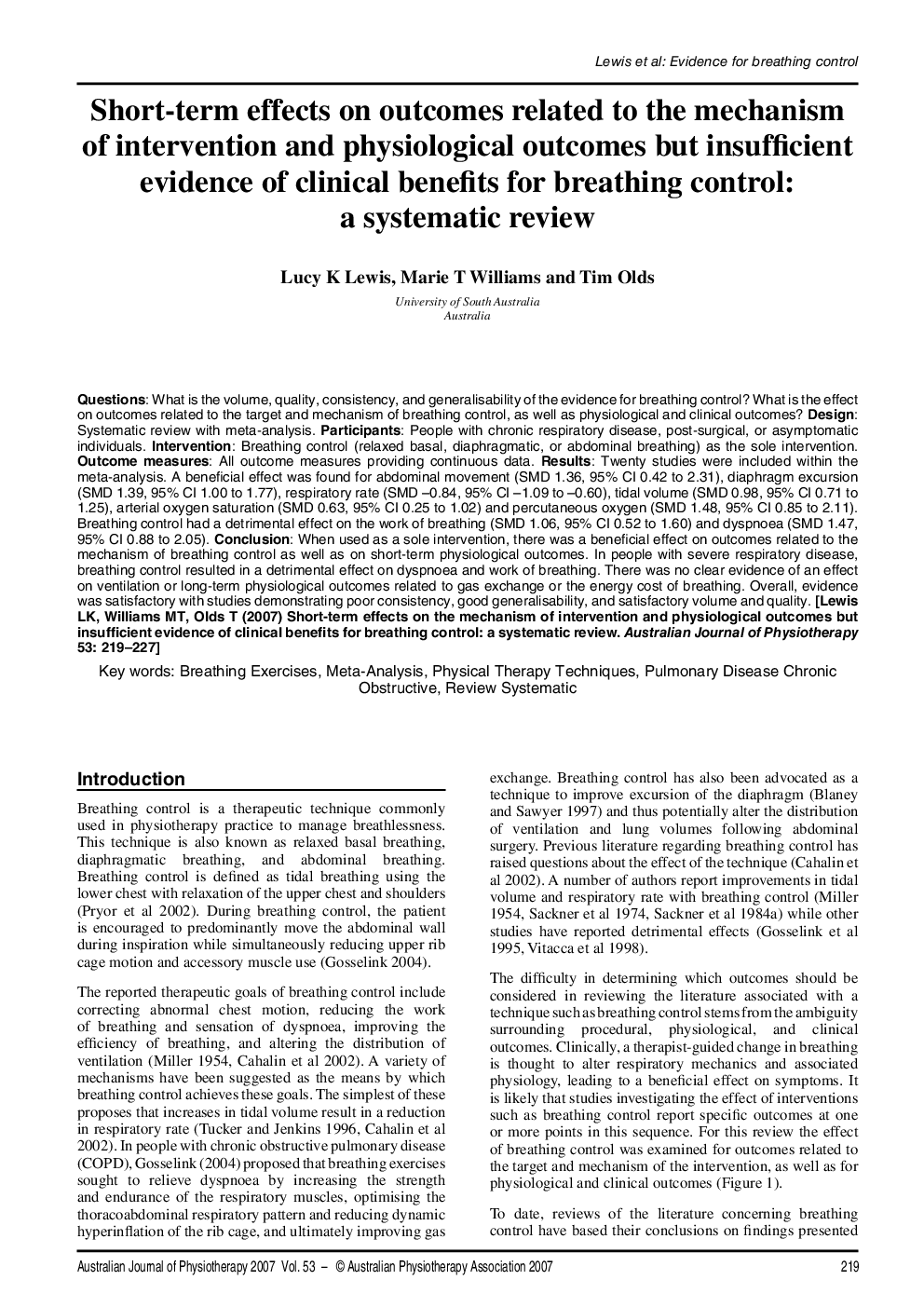| Article ID | Journal | Published Year | Pages | File Type |
|---|---|---|---|---|
| 2699196 | Australian Journal of Physiotherapy | 2007 | 9 Pages |
QuestionsWhat is the volume, quality, consistency, and generalisability of the evidence for breathing control? What is the effect on outcomes related to the target and mechanism of breathing control, as well as physiological and clinical outcomes?DesignSystematic review with meta-analysis.ParticipantsPeople with chronic respiratory disease, post-surgical, or asymptomatic individuals.InterventionBreathing control (relaxed basal, diaphragmatic, or abdominal breathing) as the sole intervention.Outcome measuresAll outcome measures providing continuous data.ResultsTwenty studies were included within the meta-analysis. A beneficial effect was found for abdominal movement (SMD 1.36, 95% CI 0.42 to 2.31), diaphragm excursion (SMD 1.39, 95% CI 1.00 to 1.77), respiratory rate (SMD –0.84, 95% CI –1.09 to –0.60), tidal volume (SMD 0.98, 95% CI 0.71 to 1.25), arterial oxygen saturation (SMD 0.63, 95% CI 0.25 to 1.02) and percutaneous oxygen (SMD 1.48, 95% CI 0.85 to 2.11). Breathing control had a detrimental effect on the work of breathing (SMD 1.06, 95% CI 0.52 to 1.60) and dyspnoea (SMD 1.47, 95% CI 0.88 to 2.05).ConclusionWhen used as a sole intervention, there was a beneficial effect on outcomes related to the mechanism of breathing control as well as on short-term physiological outcomes. In people with severe respiratory disease, breathing control resulted in a detrimental effect on dyspnoea and work of breathing. There was no clear evidence of an effect on ventilation or long-term physiological outcomes related to gas exchange or the energy cost of breathing. Overall, evidence was satisfactory with studies demonstrating poor consistency, good generalisability, and satisfactory volume and quality.
